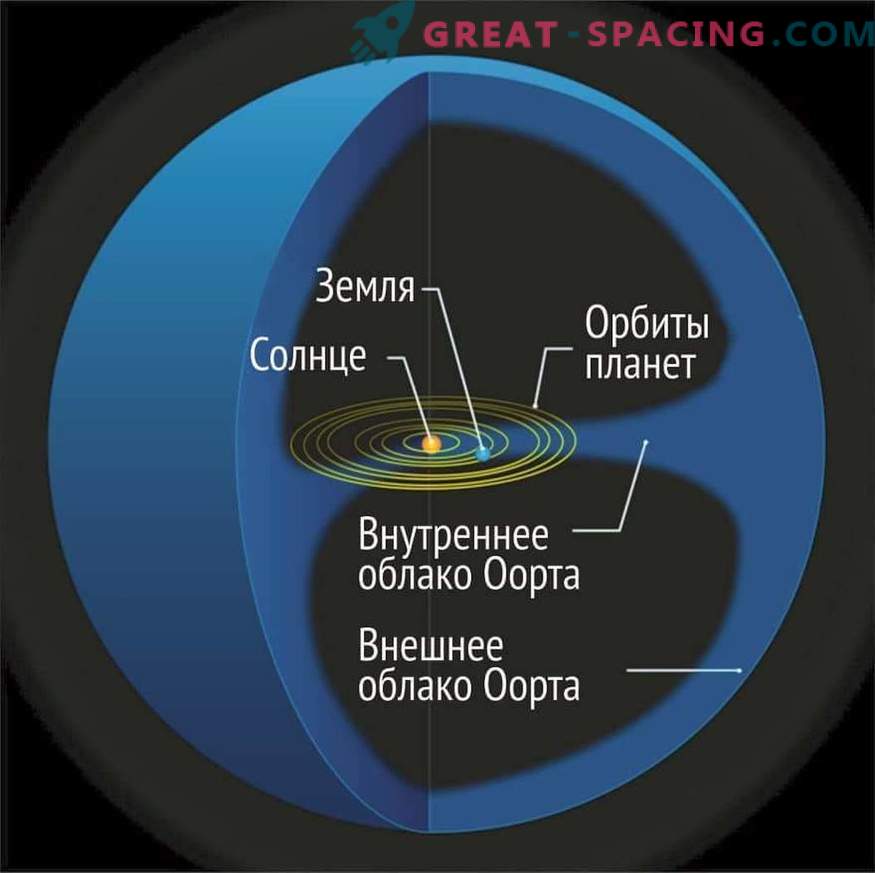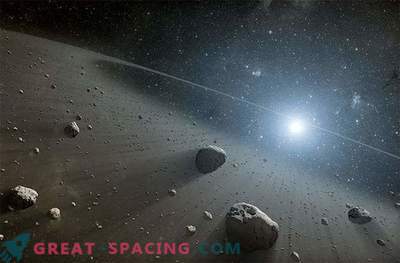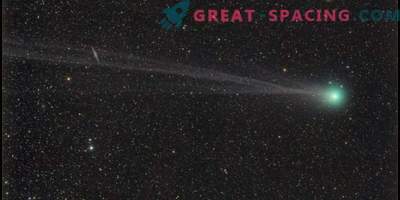
It is believed that an outer ice shell, referred to as the Oort Cloud, is concentrated around the solar system. It can live billions and trillions of objects. Some are so huge that they fall into the category of dwarf planets. In contact with stars passing by, molecular clouds and galaxy gravity, these objects are able to rush to the Sun in a spiral or out of the system. For the first time they began to think about the existence of the shell in 1950, but long distances prevent deep research.
Oort Cloud Identification
In 1950, the Dutch astronomer Jan Oort suggested that some comets coming to us come from a cloud of ice bodies that are 100,000 times as far as the Earth-Sun distance (15 trillion km). In the Solar System, two types of comets can be observed: with short intervals (several hundred years) from the Kuiper belt and longer ones (orbits reach thousands of years) from the Oort Cloud.
These two regions differ in distance and location. The Kuiper belt rotates approximately in the same plane as the planets 30-50 times farther from the Earth from the Sun. But the Oort Cloud is a shell that surrounds the entire system and is hundreds of times more distant. Cloud comets can travel 3 light years from the Sun. The farther they go, the weaker the gravitational pull of the star becomes. The presence of other stars or clouds of molecular gas can easily change their orbit, throwing or pushing towards the Sun.

Artistic vision of the Kuiper belt and Oort Clouds
It is believed that lives in the cloud 2 trillion. objects represented by ices of ammonia, methane and water. Formation appeared at the beginning of the Solar System - these are pure pieces of the early cloud, which means comets carry the material of the medium in which the early Earth developed. Then gravity poured bits of dust and ice, forming larger celestial affairs. But the inhabitants of the Oort Cloud were different. Gravity of large planets, like Jupiter, pushed the material, forcing them to stay in the outer part of the system.

Comet Hale-Bopp caught the attention of millions when she traveled from the Oort Cloud and walked past the Earth before turning back to her homeland
In 1996, Comet Hyakutake passed within 15 million km of the Earth, completing a journey of 17,000 years since it arrived from remote areas of the Oort Cloud. Another example is Comet Hale-Bopp. It flew at a distance of 197 million km and was available for review for 1.5 years. Both objects had to greatly change the orbit when passing through our system. It is believed that the original Halley comet came from the cloud, although it now belongs to the Kuiper Belt. Scientists have also found several dwarf planets that may belong to the Oort Cloud. The largest is Sedna, which occupies 3/4 of the parameters of Pluto and is 13 billion kilometers away, revolving around the Sun for 10,500 years. Among others there are 2006 SQ372, 2008 KV42, 2000CR105 and 2012 VP113 - comets with a coverage of 50-250 km. In 2018, we found the object 2015 TG387, nicknamed Goblin.











































